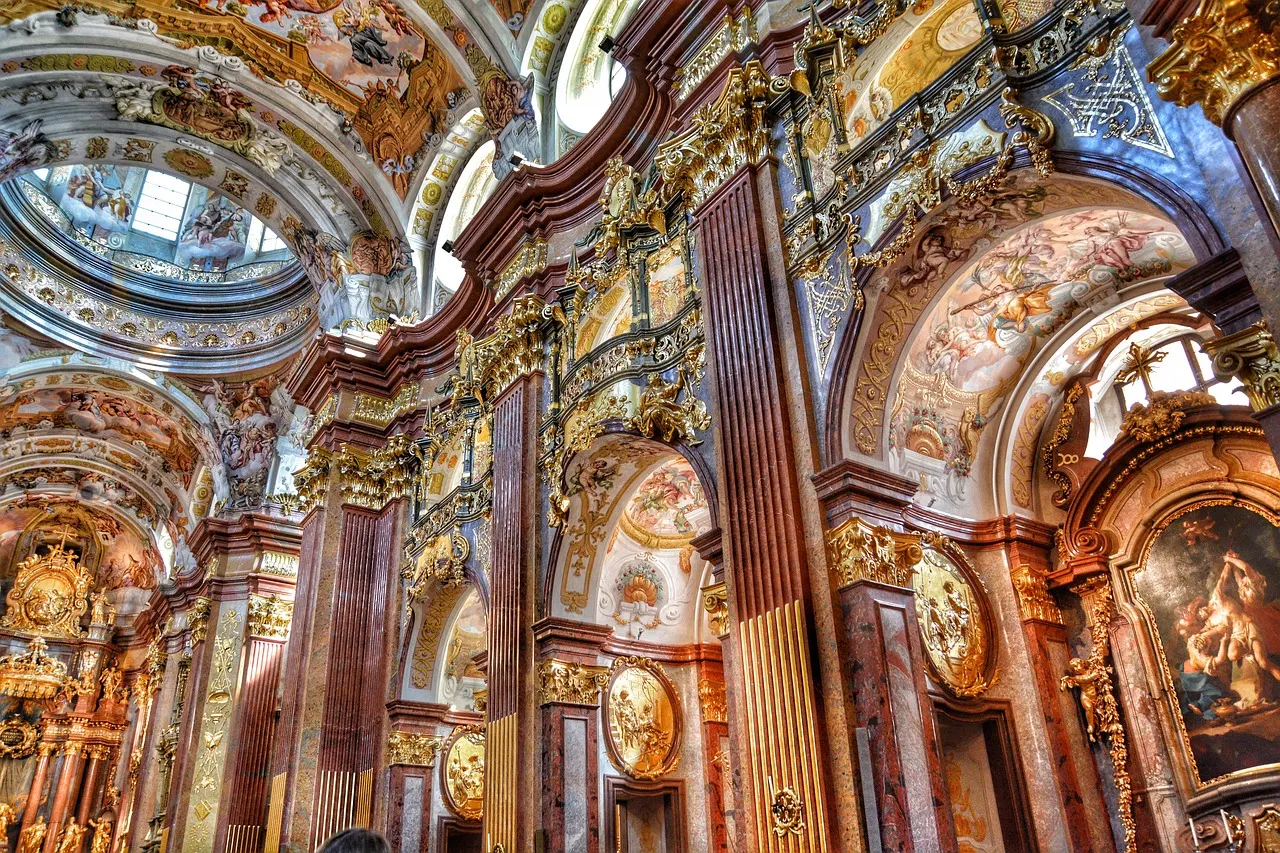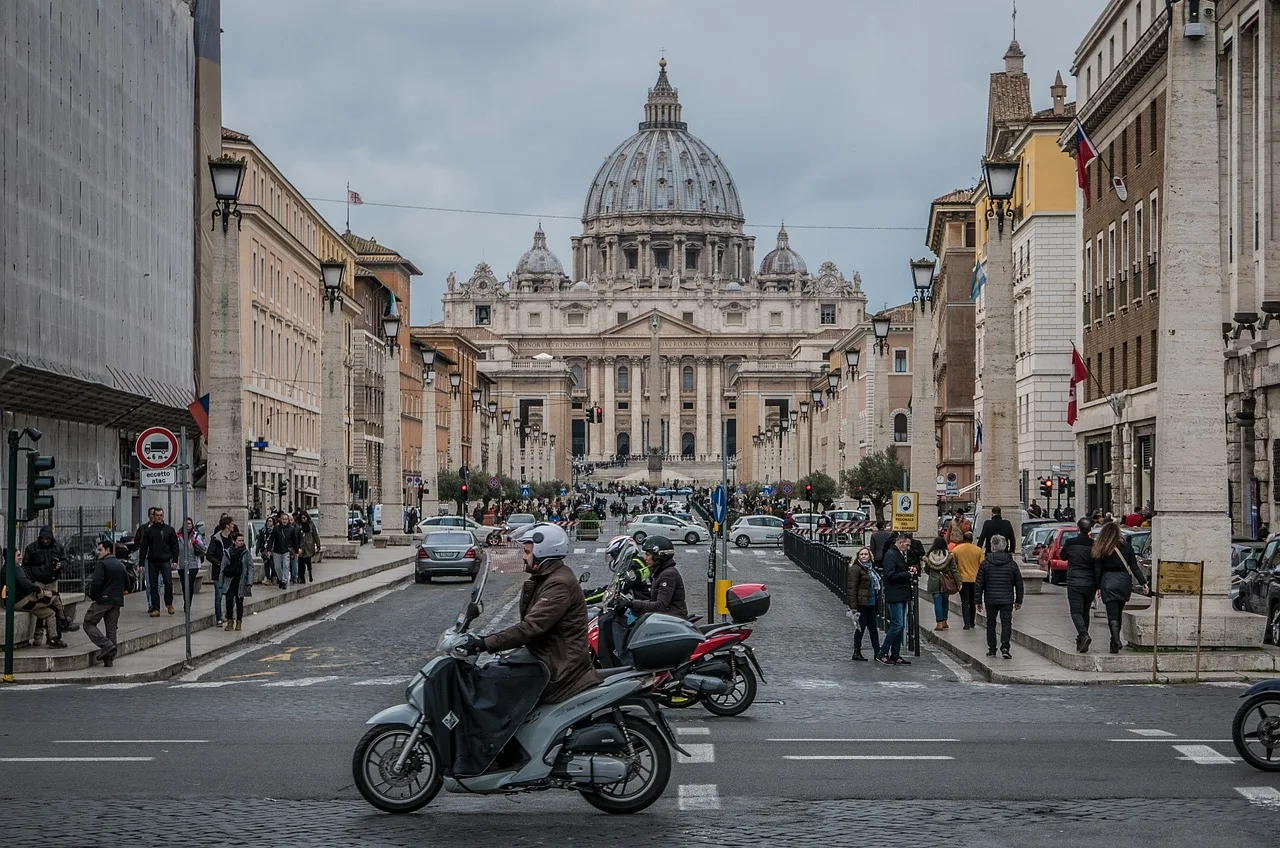Discover the Grandeur and the Allure of Baroque Architecture
Foreword
- To truly comprehend and delve into the world of Baroque architecture, one cannot overlook the significance of Rococo architecture. While both architectural styles emerged in Europe during the 17th and 18th centuries, Rococo represents an evolution and refinement of Baroque elements, incorporating new concepts and aesthetics. Therefore, understanding Rococo is crucial for a comprehensive appreciation and exploration of Baroque architecture.
Another Architectural Style to Discover: The Famous Baroque Architecture
Walking into a grand baroque building feels like stepping into a time machine that transports you straight into the extravagant and opulent world of the 17th and 18th centuries. Baroque architecture, with its elaborate details, ornate decorations, and dramatic elements, is a true feast for the eyes. But what exactly is the allure of this style? Why does it continue to captivate us centuries later?
Welcome to the world of Baroque architecture, where grandeur, drama, and exuberance meet, and take center stage. This architectural style emerged in the 17th century and left an indelible mark on the history of art and design. In this blog post, we will delve into the fascinating emergence, captivating history, defining characteristics, and remarkable examples of Baroque architecture from around the globe.
Prepare yourself and join me as we explore the grandeur and the allure of Baroque architecture!
 |
| Church wall from inside featuring baroque architecture ornaments. Image by Thomas Wolter from Pixabay |
The Emergence of Baroque Architecture
Baroque architecture flourished during the 17th and 18th centuries, originating in Italy before spreading across Europe and other parts of the world. It was born as a response to the Renaissance's emphasis on balance and harmony, aiming to evoke intense emotions and create a sense of awe in the viewer. It also embraced grandiosity and theatricality, reflecting the cultural and religious context of the time.
A Tapestry of History
Here is a short glance at the history of Baroque architecture which was intertwined with the political, religious, and artistic developments of the era. One of the prominent patrons of Baroque architecture was the Catholic Church, which sought to impress and inspire its followers through monumental and awe-inspiring structures.
The Counter-Reformation movement played a significant role in fostering the spread of Baroque architecture, as it sought to reassert the power and influence of the Catholic Church in response to the Protestant Reformation.
 |
| The famous St. Peter's Cathedral in Rome is a notable baroque architecture building. Image by Mauricio A. from Pixabay |
Anyway, and within the same contest, it is useful also to note that Baroque architecture predates Rococo architecture. The Baroque style emerged in the late 16th century and reached its peak during the 17th century. It originated in Italy as mentioned before, and then spread throughout Europe, becoming the dominant architectural style of the time.
On the other hand, Rococo architecture emerged as a reaction to Baroque during the early 18th century, primarily in France. It represents a shift towards more delicate and elegant designs, featuring intricate ornamentation, pastel colors, and asymmetrical compositions. Rococo was a lighter, more playful, and refined interpretation and version of the Baroque style.
So then, in terms of chronology, the Baroque predates the Rococo. Baroque flourished during the 17th century, while Rococo came into prominence in the early 18th century as a development and refinement of the Baroque style.
Defining The Characteristics
Baroque architecture is characterized by its grandeur, dramatic effects, elaborate ornamentation, and a focus on creating awe-inspiring spaces. It is also characterized by its extravagant and dynamic nature. It embraces ornamentation, curves, and dramatic elements that create a sense of movement and vitality.
Here are some key features that distinguish Baroque architecture:
Dramatic Facades:
Baroque buildings often feature elaborate facades with intricate detailing, sculptural elements, and contrasting light and shadow effects. The facades draw the viewer's eye and convey a sense of grandeur.
Curvaceous Forms:
Unlike the geometric precision of Renaissance architecture, Baroque architecture celebrates fluidity and organic shapes. Curves, domes, and undulating facades are common, adding a sense of motion and drama to the edifices.
Rich Ornamentation:
Baroque architects spared no expense when it came to ornamentation. Intricate sculptures, decorative elements, and lavish embellishments adorn both the exteriors and interiors, creating a feast and dazzlement for the eyes.
Illusionistic Effects:
Architects who worked with the Baroque style mastered the art of illusion. Through the clever use of perspective, trompe-l'oeil paintings, and optical tricks, they created a sense of depth and movement that enhanced the overall theatricality of the spaces.
... But how do Baroque and Rococo styles really differentiate from each other?
Baroque architecture, characterized by grandeur, drama, and elaborate ornamentation, as we noted before, was a response to the religious and political climate of its time. It aimed to awe and inspire the viewer, often utilizing intricate detailing, bold curves, and rich decoration.
The style was prominent in churches, palaces, and public buildings, showcasing the power and influence of the Catholic Church and European monarchies. Its architectural achievements, such as St. Peter's Basilica in Rome (See image above) and the Palace of Versailles in France, are iconic examples of the Baroque era.
However, as the 18th century unfolded, a shift in societal attitudes and tastes occurred. The Age of Enlightenment brought forth a growing emphasis on reason, rationality, and individualism. This new mindset manifested in the emergence of the Rococo style, which sought to infuse architecture with grace, elegance, and a more light-hearted atmosphere.
Rococo architecture deviated from the grandiosity of Baroque, favoring delicate and intricate ornamentation, pastel colors, and asymmetrical compositions. The style flourished in France, particularly during the reign of Louis XV, where it found expression in interior design, decorative arts, and architecture. Refer to Exploring the Rococo Architecture Style for more info.
Notable examples include the Palace of Versailles' Petit Trianon and the exquisite interiors of the Palace of Sanssouci in Potsdam, Germany.
By acknowledging the Rococo style and its impact on architecture, we gain a deeper understanding of the Baroque period. Rococo, as a reaction to the Baroque extravagance, embodies a more refined and intimate approach to design. It shifted the focus from the monumental to the personal, from the power of institutions to the pleasure and comfort of individuals. This transition demonstrates the evolving tastes, social values, and artistic expressions of the time.
Furthermore, Rococo introduced new architectural elements and features that directly influenced later styles. The intricate stucco work, the use of curves and flowing lines, and the integration of decorative elements within architectural elements all laid the groundwork for subsequent architectural movements, such as Neoclassicism and even Art Nouveau.
In summary, the study of Baroque architecture is incomplete without considering the Rococo style. The Rococo represents a significant evolution in architectural aesthetics and sensibilities, offering a refined and delicate counterpoint to the grandeur of Baroque.
It provides valuable insights into the shifting cultural and social contexts of the 18th century, as well as the foundations for future architectural developments. Therefore, by exploring the Rococo in relation to Baroque, one gains a more comprehensive understanding of the rich and diverse tapestry of European architectural history.
Notable Examples of Baroque Architecture
- St. Peter's Basilica (Vatican City): One of the most iconic examples of Baroque architecture, this awe-inspiring basilica was designed by renowned architects, including Michelangelo and Gian Lorenzo Bernini. Its massive dome, grand colonnades, and ornate interior exemplify the dramatic and opulent nature of the Baroque style.
- Palace of Versailles (France): A testament to the grandeur of the French monarchy, the Palace of Versailles is a magnificent showcase of Baroque architecture. Its expansive gardens, ornate interiors, and breathtaking Hall of Mirrors transport visitors to a world of luxury and extravagance.
- Schönbrunn Palace (Austria): This UNESCO World Heritage site in Vienna embodies the grandeur of Baroque architecture. Its symmetrical facades, majestic gardens, and opulent interiors make it a must-visit destination for architecture enthusiasts.
 |
| Schönbrunn Palace, a UNESCO World Heritage site in Vienna embodies the grandeur of Baroque architecture, Photo: justicevonmaurart103.weebly.com/ |
- Church of São Francisco (Brazil): Located in Salvador, Brazil, this church showcases the fusion of Baroque architecture with local craftsmanship and influences. Its intricately carved wooden interior, vibrant colors, and gold leaf accents create a unique expression of the Baroque style in a tropical setting.
 |
| Located in Salvador, Brazil, this church showcases the fusion of Baroque architecture with local craftsmanship, Photo: flickr.com |
Final Thoughts
Baroque architecture continues to captivate and inspire with its grandiose designs and theatrical flair. Its emergence marked a shift from the classical principles of balance and harmony to an embrace of exuberance and emotion. As you explore the stunning examples of Baroque architecture around the world, allow yourself to be transported to an era of opulence and artistic expression.
Whether you find yourself standing in awe before the monumental St. Peter's Basilica or strolling through the breathtaking gardens of Versailles, the legacy of this architectural style is an enduring testament to human creativity and the pursuit of beauty. Embrace the grandeur, soak in the drama, and let the world of Baroque architecture sweep you off your feet.
Experience the magic of Baroque architecture firsthand, and let its opulence and theatricality leave an indelible impression on your soul. Embark on a journey through time and indulge in the splendor of this architectural masterpiece. Baroque architecture awaits you!
.png)






